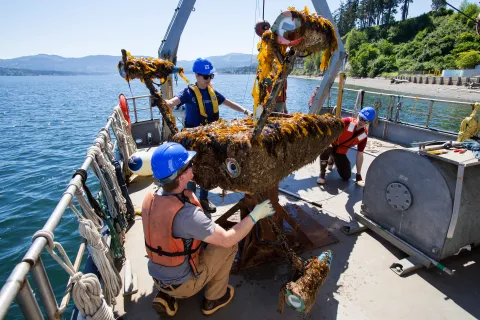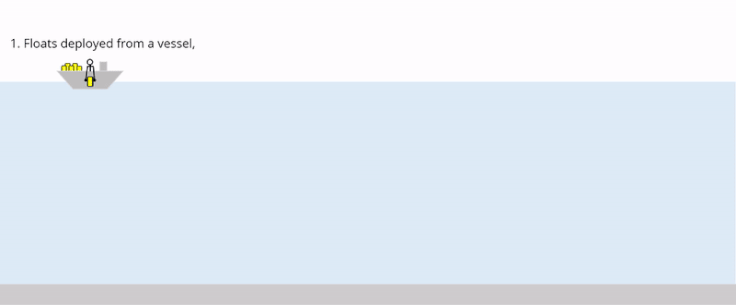Lessons in the deep
One student’s journey to build a swarm of robotic devices for underwater mapping
The path to Trevor Harrison’s Ph.D. reached its climax in the rushing waters of Agate Pass, a narrow tidal strait northwest of Seattle. There the strong flowing currents provided the greatest test yet for a swarm of robotic sensor packages he’s developed to make 3D maps of dynamic underwater environments.
He calls his inventions µFloats (pronounced “microFloat” using the scientific prefix of the Greek letter mu).
The floats are cylinders, roughly two feet long and 11 pounds each, built to do three things: adjust their buoyancy to dive to certain depths, drift with the currents, and gather data such as water speed and temperature from the environment around them. Getting quality data of this kind is currently difficult and costly for researchers who need to understand the characteristics of a particular location, such as for estimating the potential power production and environmental impacts of a tidal energy project.
Now, five years after his first prototype hit the water, Harrison has validated the µFloats as a new technology for surveying tidal flows and coastal environments. But the path was not always straightforward.
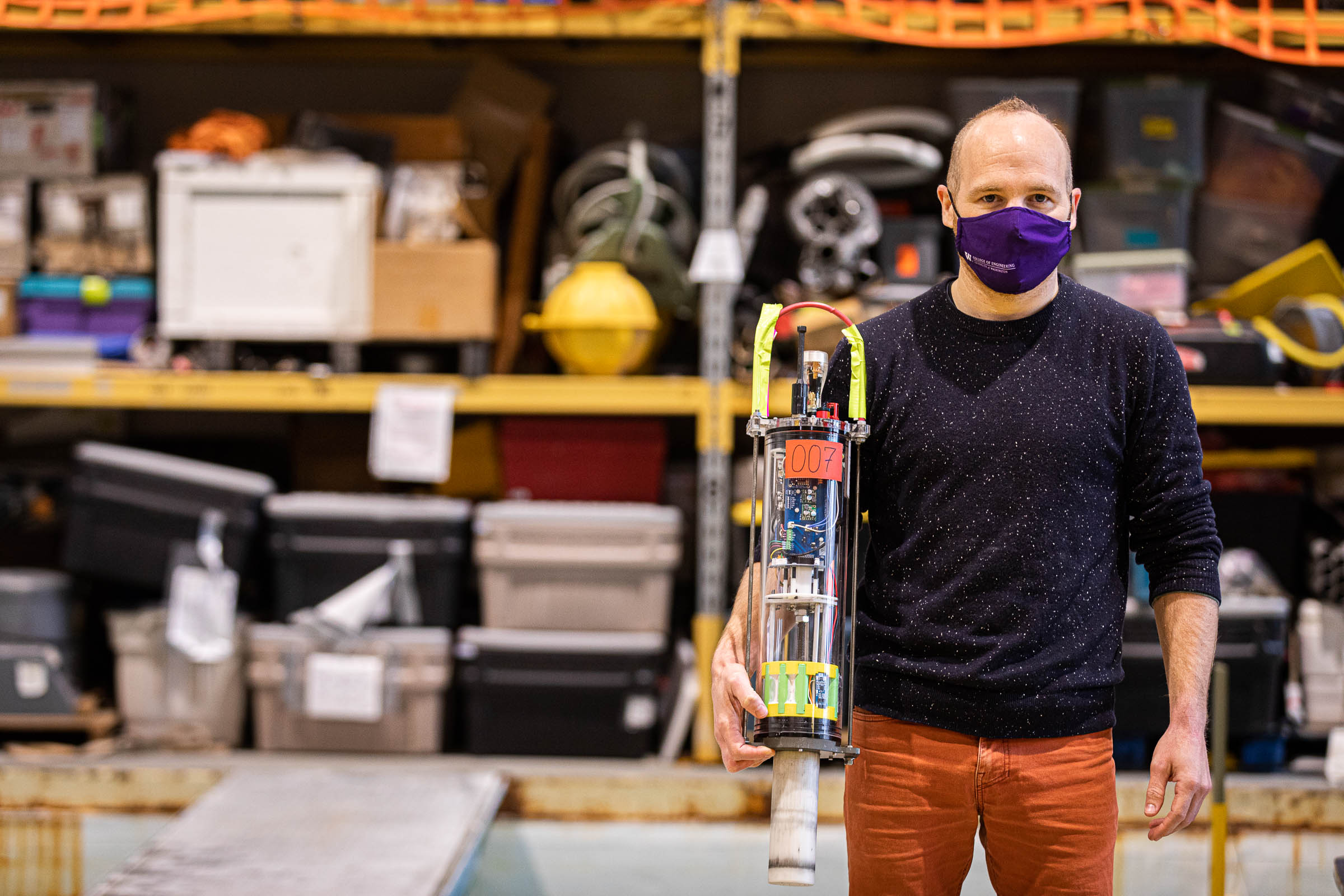
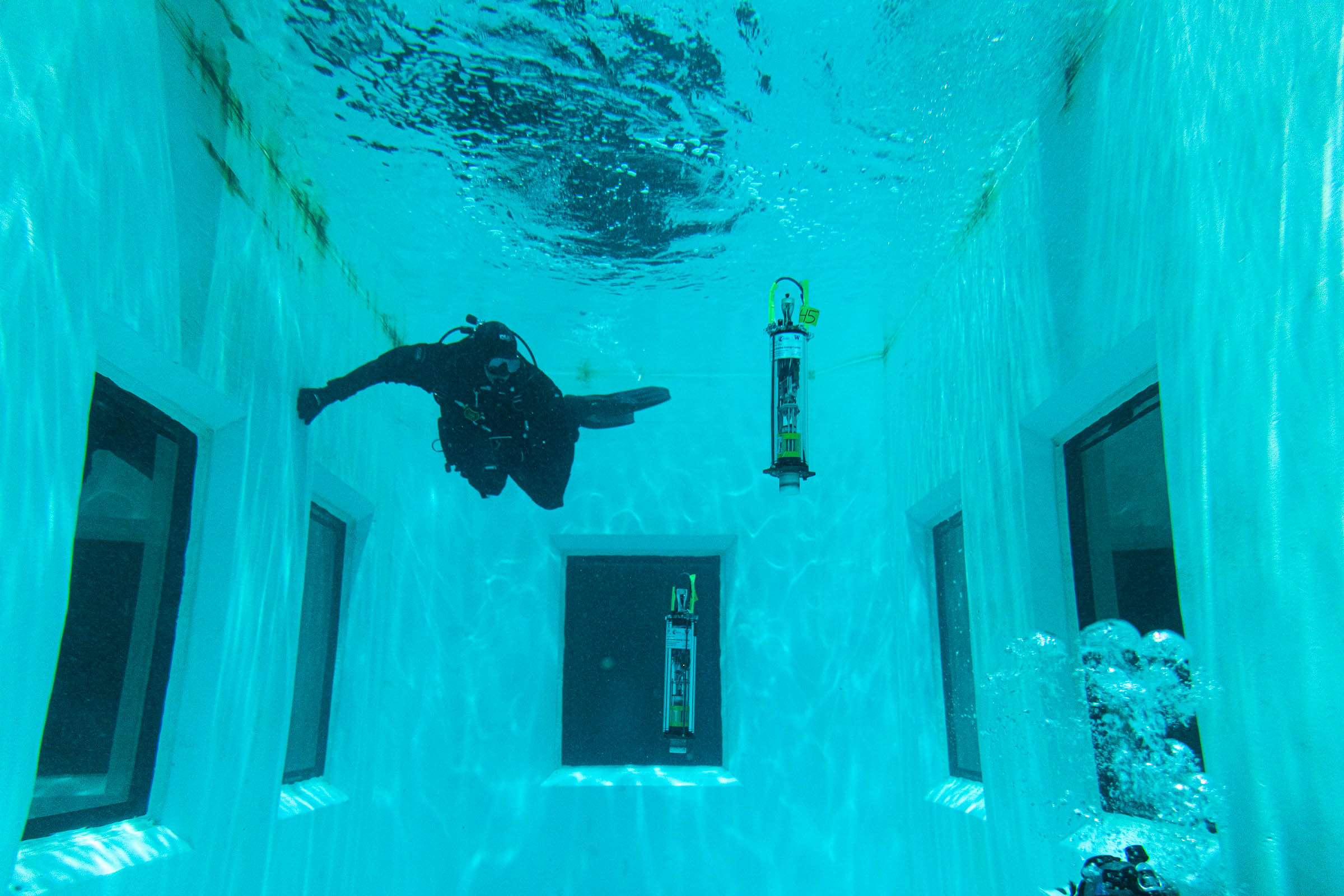
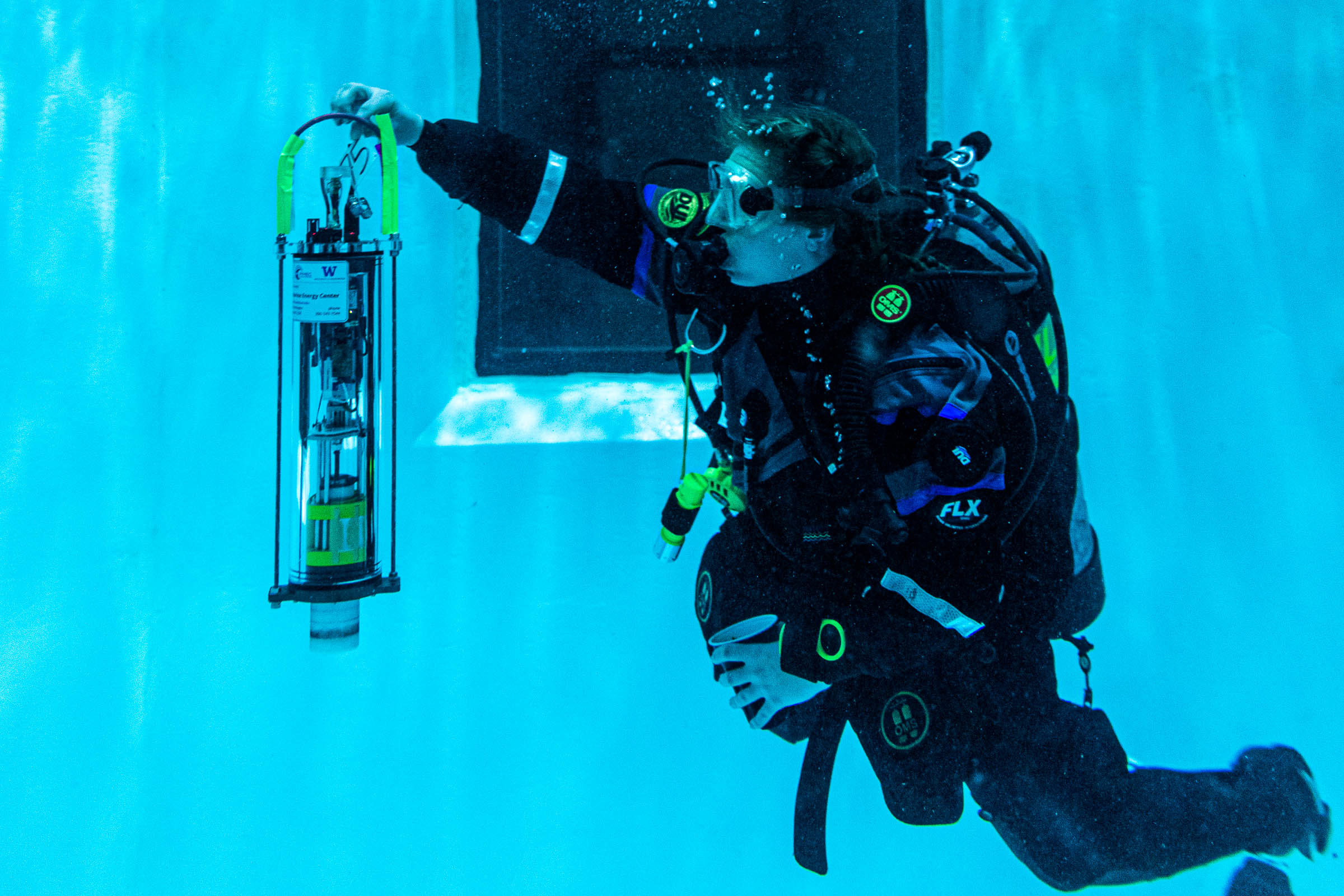
ME doctoral student Trevor Harrison runs a test of his µFloat (pronounced “microFloat”) in the UW Ocean Sciences test tank with the assistance of two divers.
From physics to marine energy
Harrison’s undergraduate degree is in physics but while working as a research technician at the Woods Hole Oceanographic Institution he decided to switch to engineering.
“I saw scientists building cool oceanographic instrumentation and was captivated,” he recalls. “I knew I wanted to go back to school to do something that felt more tangible, so I was looking for areas with a societal and sustainability impact.”
He decided marine renewable energy fit his aspirations and joined ME associate professor Brian Polagye’s lab as a graduate student in 2013.
There, he learned about the need for better maps of tidal and river environments to help determine the best places to put renewable energy systems like tidal power plants or in-river turbines. Tim Mundon, Vice President of Engineering at Oscilla Power and an affiliate faculty member in ME, proposed the idea to Polagye that a swarm of low-cost, free-floating sensors could be a way to improve resource maps. These are critical because even a small difference in the estimated speed of the currents means a large difference in how much electricity a site can potentially generate.
"I took the idea and ran simulations that indicated that if you could put 20 to 50 sensors into the water, that’d be enough to generate a reasonably good 3D map,” says Harrison.
µFloat 1.0: The buoyancy engine
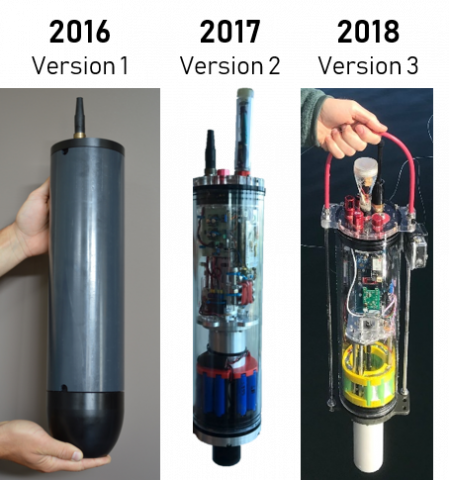
For the initial prototype he challenged a capstone team of Formula Motorsports students to develop a “buoyancy engine” – a device that can adjust whether it sinks or floats.
The team hand-built a hollow tube with a large piston attached to a motor and a basic computer. As the piston moved into the device, it became dense and sunk, as it moved out again, it created a hollow cavity and floated back to the surface.
On May 26, 2016, ME Formula Motorsports students Olivia Rogers, Adam Hill, Alex Reid, James Lindsay demonstrated the very first successful test of a custom-built buoyancy engine device, the earliest µFloat prototype.
µFloat 2.0: A prototype down under
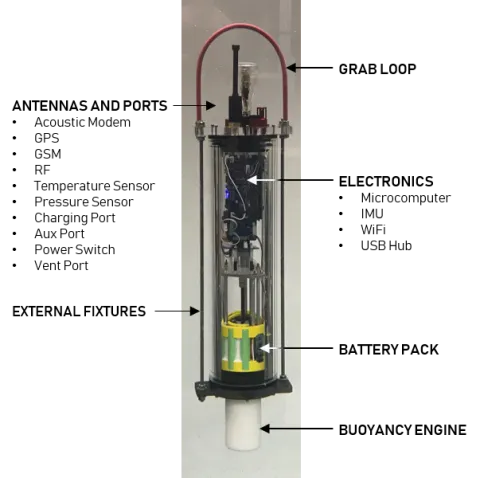
In 2017, Harrison received support from the National Science Foundation’s Graduate Research Opportunities Worldwide program to do cooperative research in Australia with Matthew Dunbabin, a professor of electrical engineering and robotics at the Queensland University of Technology (QUT).
“I flew to Australia with a half-built float,” he remembers. “I had the buoyancy engine, but I still had to put together the full package of sensors and controls and build out a communication system.”
Over seven months, he prototyped the electronics, testing as he went in QUT’s swimming pool. Two days before his flight back to the U.S., Harrison and Dunbabin took a rented canoe out on the Maroochy River and tossed in the prototype µFloat. After a few tense minutes where they feared the float was lost, they located it, successfully completing the first field test.
Trevor Harrison and Matthew Dunbabin give the µFloat its first field test from a canoe on the Maroochy River.
µFloat 3.0: Assembling a swarm
Back in Seattle, the progress was enough for teammates from the Pacific Marine Energy Center (PMEC) and UW Applied Physics Laboratory (APL) to secure funding from the Office of Naval Research to build a µFloat fleet.
“You learn a lot from building things, and even more from breaking them and re-building them,” says Harrison. “However, I found out that if you build 25 you’d better be ready to learn a ton because something different seems to go wrong on each one.”
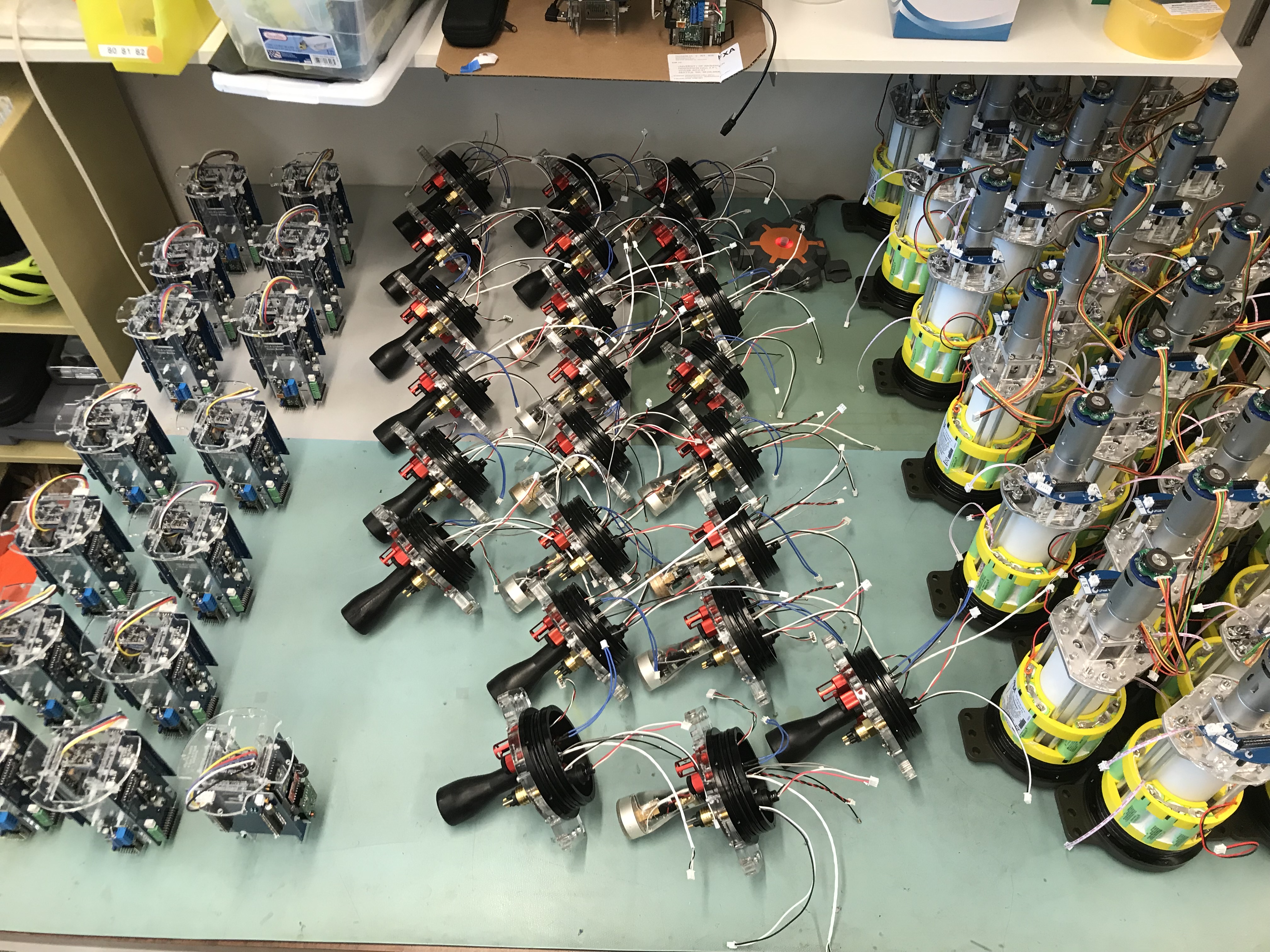
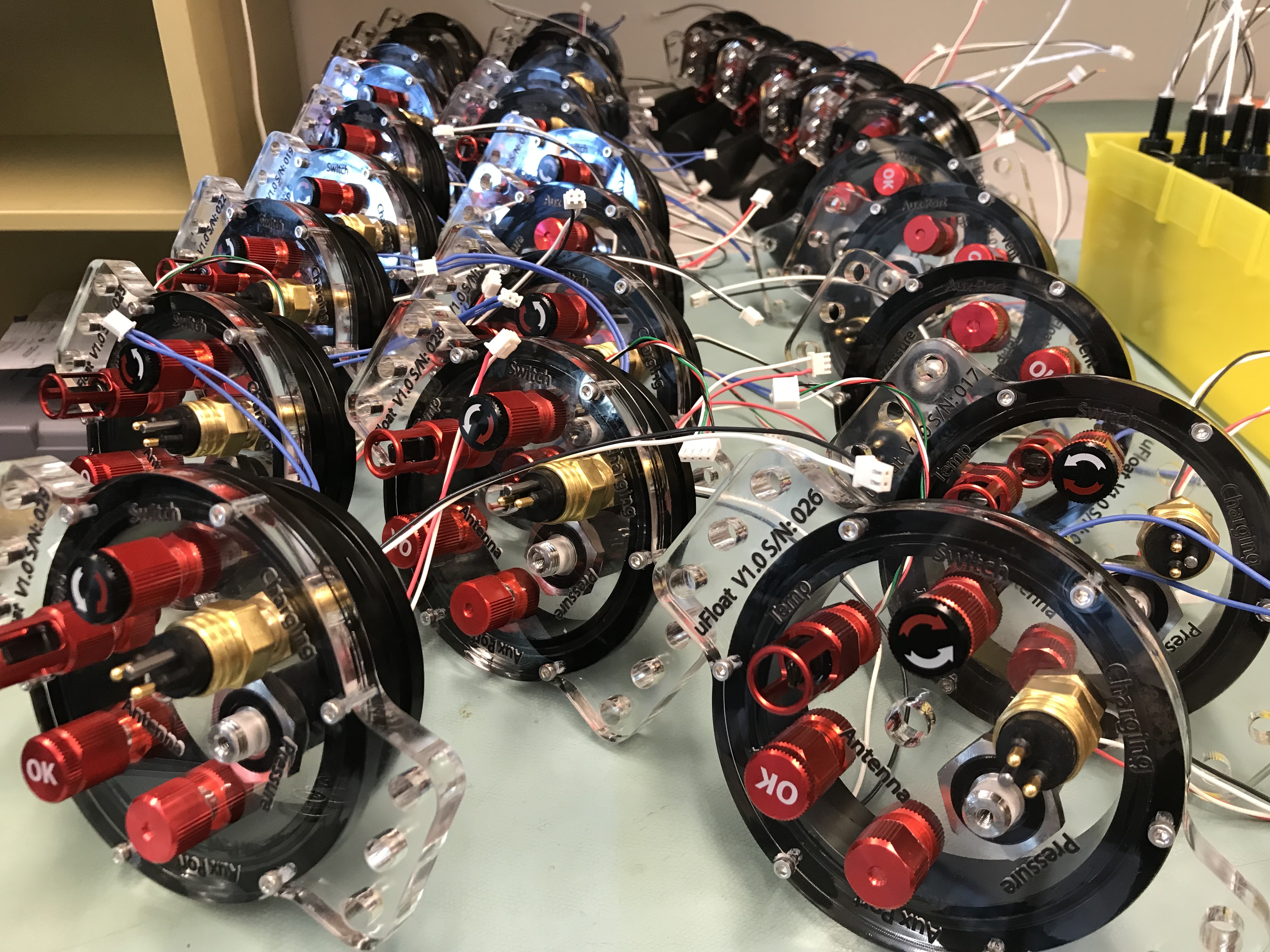
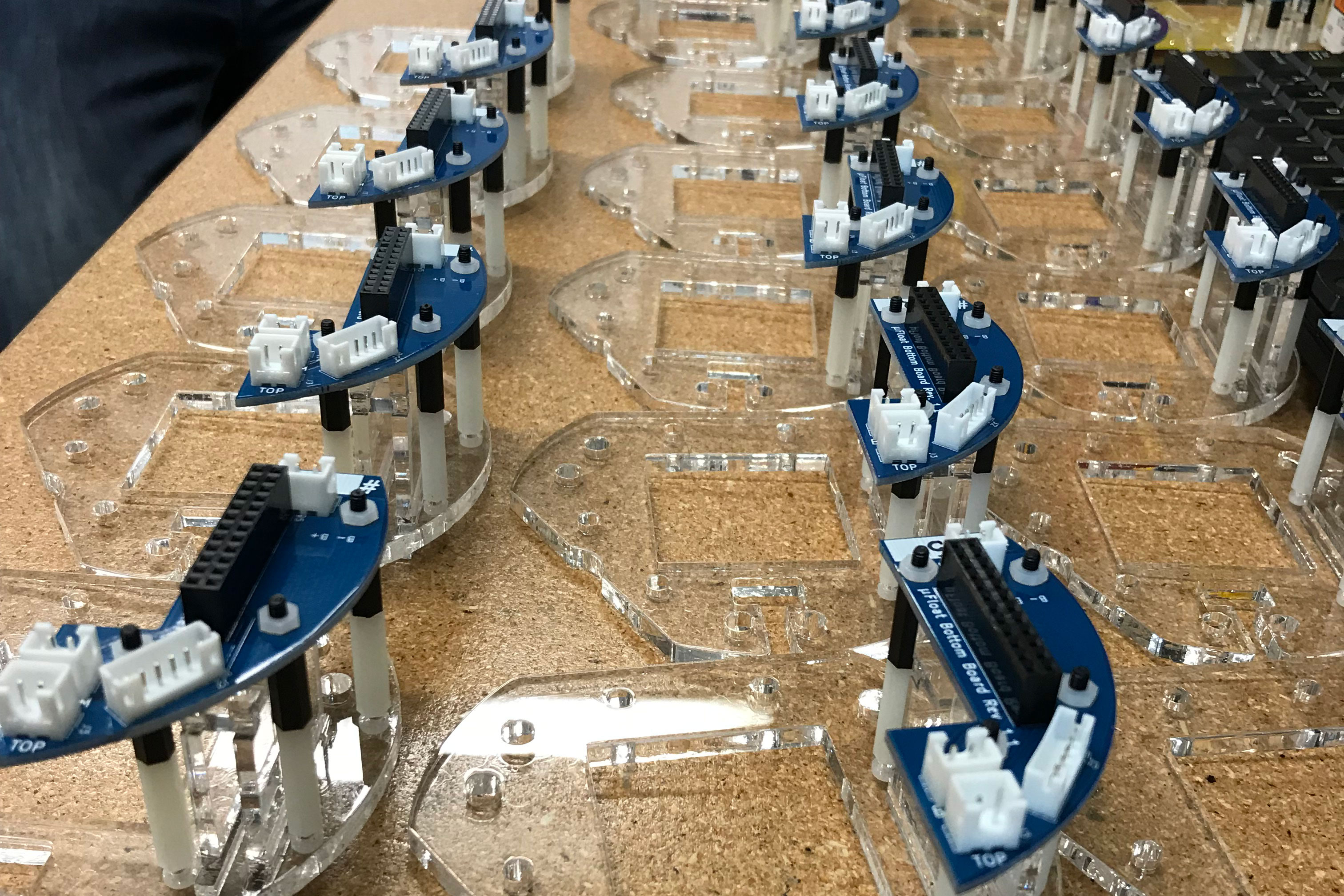
The fleet of µFloats during the assembly process.
Deploy, recover, debug, repeat.
With a fleet constructed, Harrison and the µFloat team began testing in Lake Washington and the tidal waters of Sequim Bay in 2019.
“The field work is a small percentage of the overall time but it’s also where you collect your critical data,” he says. “Those days can be high stress, but also very motivating.”
Through 2019 and 2020 the µFloat team ran a series of test deployments in Lake Washington and Sequim Bay.
Following each outing, the µFloat data improved, building the team’s confidence towards the key deployment at Agate Pass. There they would collect data from the µFloat swarm while Jim Thomson, an oceanographer at APL and civil and environmental engineering professor, gathered data in more traditional ways. A comparison between the two surveys would indicate how accurate and effective the uFloats are in practice.
Over the course of two days at Agate Pass, the team repeatedly deployed and retrieved the floats, amassing 340 drifting paths of tidal flow observations. One of the 20 µFloats went missing, but Harrison got a hefty dataset for the last chapter of his dissertation. As far as he’s concerned, the trip was a success.
Having defended his Ph.D., Harrison will continue to explore µFloat applications with APL and through MarineSitu, a marine instrumentation company spun out of the UW.
He credits teamwork for every step of his journey.
“A lot of life happens in eight years. I benefited so much from the amazing people and facilities at the UW. I never would have gotten to this point without a ton of collaboration and support.”
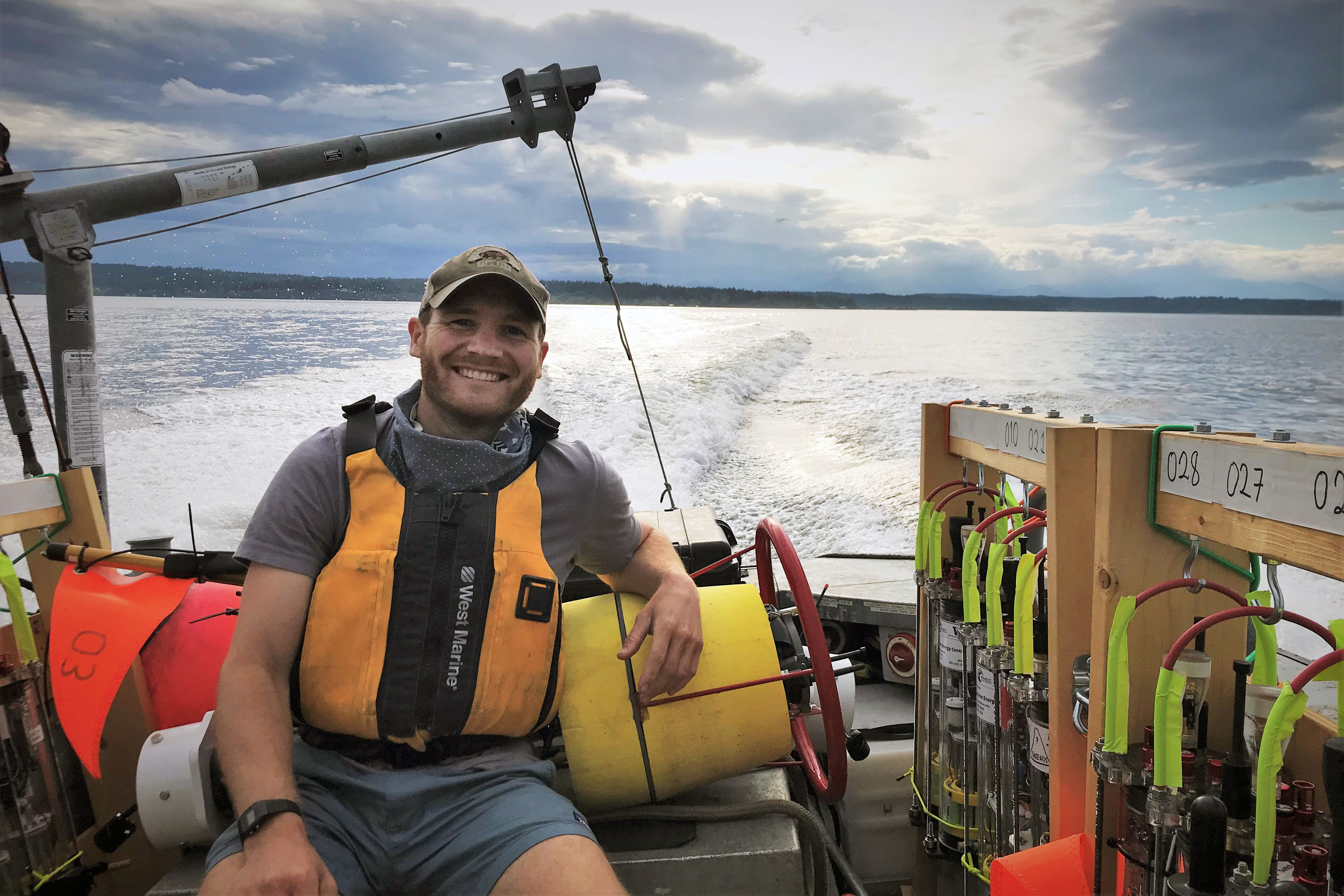
Story by Andy Freeberg
Lead photography by Mark Stone
Other images and videos courtesy of Trevor Harrison and UW µFloat team members
A project highlight on the Pacific Marine Energy Center website contains further project details, links to related research papers and a list of acknowledgements.
